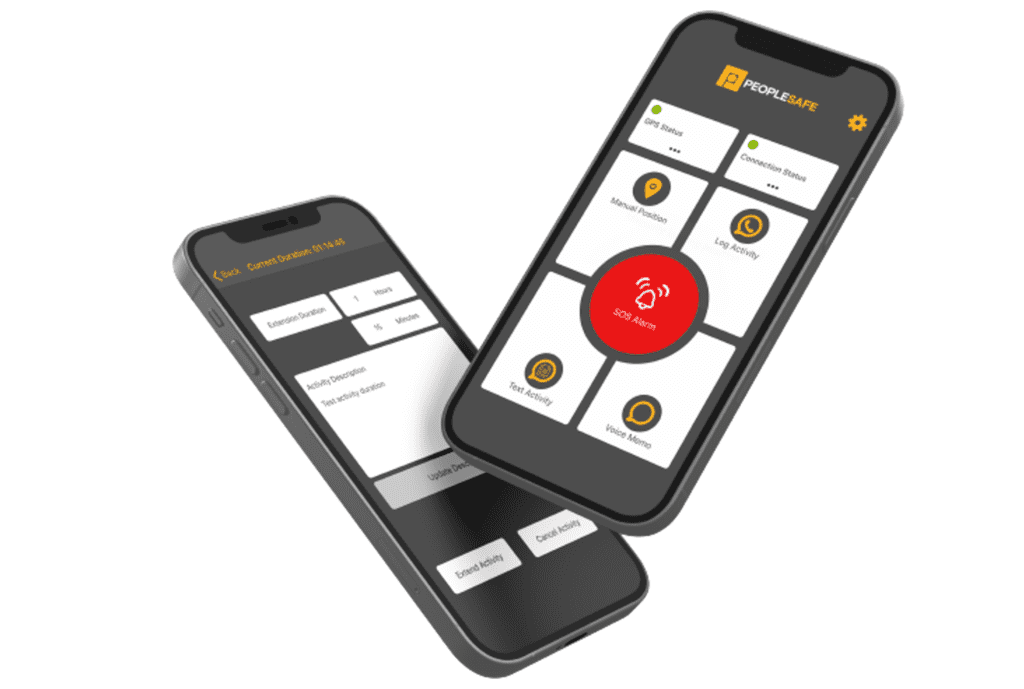Lone Working Policy and Procedures
Facilitating safe lone working starts with clear policies and procedures that are clearly communicated and easily accessible.
Lone workers face unique risks and challenges due to the nature of working out of sight or earshot of colleagues. This means that lone workers require their own set of policies and procedures to ensure they are protected from risk.
What is a lone working policy?
A lone working policy is a written document that provides guidance for employers and employees on the company’s processes when lone working. It should offer practical health and safety guidance that employees working alone can apply to their roles, outline the responsibilities of both the employer and employee, provide information on how to report safety concerns, and instruct managers and team members on how to respond in an emergency.
Although not a legal requirement, an effective lone working policy can help to promote a strong safety culture among employees, improving confidence while lone working and simultaneously reducing incidents, accidents and injuries.
Lone working policies should be accessible and easy to understand. Lone workers and their managers need to familiarise themselves with the document, and a copy should also be issued to new employees who will work alone and to any relevant contractors or temporary workers.
Why is a lone worker policy important?
Employers have a duty of care for the health, safety and wellbeing of their workforce, contractors and volunteers – this includes lone workers and is enforced by UK health and safety legislation.
The Health and Safety at Work etc Act 1974 sets out the general health and safety duties of employers and employees ‘so far as is reasonably practicable’ – meaning putting in place policies and procedures that mitigate risks that can be foreseen in advance.
Under the Management of Health and Safety at Work Regulations 1999, general risk assessments must be completed by all employers; additionally, those with five or more employees must record significant findings. Although it’s not necessary to conduct a separate risk assessment for lone workers, they should be considered in an employer’s general risk assessment.
The act of lone working itself does not make a task more high-risk; the fact that the employee is alone without a colleague nearby, however, increases the severity of the incident should anything happen. As such, a generic health and safety policy does not cover the specific risks faced by lone workers.
A lone worker policy provides employees with guidance on how to remain safe while on the job and explains how managers and colleagues should respond in an emergency. So, although a lone worker policy isn’t legally required, by creating a comprehensive policy and conducting a thorough health and safety risk assessment, employers can fulfil their duty of care under this legislation and avoid potential fines.
Gathering risk information for a lone worker policy
The risk information in any lone worker policy is one of the most important aspects of the document, so take time to consider the full scope of risks and scenarios experienced by all employees working alone.
The key to a strong lone working policy is to consider all of the potential risks that lone workers face and offer best-practice guidance. This will give lone workers the freedom and confidence to make informed decisions about their safety.
When considering risks, it’s worth reviewing your accident book to see what incidents have occurred in the past and then putting measures in place to prevent this type of incident from occurring again. It may also be worth consulting other companies within your sector to see if there are common incidents that haven’t occurred at your company but may be likely to.
To make sure all areas are covered, you could also use these methods to gather information about potential risks:
- Focus groups with employees
- Surveys and questionnaires
- Observe staff in their working environment
- Formal auditing
Download our guide for help conducting a lone worker risk assessment.
Tips on structuring a lone working policy
Policies must follow a standard format to ensure consistency. Your business may already have a standard policy template so you won’t have to start from scratch. Here are a few things to remember when creating a lone working policy:
- The style should match other policies within your organisation
- Use a simple structure that makes it easy to find everything
- Write in clear, concise language and in the third person
- Don’t include words that imply choice, such as “should” and “may”
- Do not use information that will date, such as names or web addresses
- Spell out words the first time, then show the acronym in parentheses, e.g., Lone Worker (LW)
Ensure your policy stays up to date by updating it whenever your risk assessment is updated or new health and safety procedures are implemented
What should be included in a lone working policy?
A lone working policy sets out organisational commitments and expectations whenever an employee is required to work alone. There are eight key elements that all lone working policies should include:
Risks
Add specific risk situations and how to handle them. Break down risks by job roles, lone worker type or department if your organisation has different risks that aren’t applicable to all lone workers.
Purpose & Background
Provide a rationale for the policy, with background information such as why the policy exists, how it relates to your organisation’s values and how it will help protect lone workers.
Definitions
Define who a lone worker is and what your organisation views as lone working. These definitions will make it clear who the policy is written for and in what situations it applies. Here is an example definition of a lone worker from our Lone Working Policy template.
A lone worker is an employee who performs an activity that is carried out in isolation from other workers without close or direct supervision.
Download our guidance on how to identify a lone worker.
Where a lone worker service is being implemented, the policy should also define measurements such as usage. For example, does usage mean simply having a lone worker device switched on, should workers record voice memos before each appointment, or does it mean they have to check in and out at the start and end of each shift.
Organisational Commitment
Your lone working policy provides a great opportunity to let employees know how much your company cares about their safety. Your organisation may already have an overall safety commitment – you could use this or write a specific one for lone workers. Here is an example of an organisational commitment to safety from the well-known car manufacturer, Ford;
Barclays also state its commitment to safety;
Responsibilities
The policy needs to be clear on who is responsible for what, including employees themselves. For example, employees need to take reasonable care of their own personal safety, including not putting themselves in a situation that could compromise their safety. Make this clear by outlining the procedures lone workers are expected to complete while working alone (e.g. check in with a buddy upon arrival at a site).
Managers and supervisors need to be aware of their responsibilities which may include completing a lone working risk assessment, being an escalation contact, and reporting incidents in the correct manner.
Senior managers also have responsibilities to ensure the company’s procedures are compliant with health and safety laws and regulations.
Include information on lone worker devices too e.g., who is managing usage (managers) and what employees are responsible for (making sure their devices are charged etc.).
Reporting
It needs to be clear to whom an employee should report incidents. Whether it is through a formal logging system or as simple as telling the correct person and filling out a form. Reporting lone worker incidents is important as it can often present an opportunity to learn or uncover a new risk.
Lone Worker Services
Providing safety products is one of the most effective ways of protecting lone workers and is the first choice for many employers. By implementing an employee safety service, lone workers can have 24/7 support from trained alarm handlers who have direct access to the emergency services in a life-threatening incident.
Help & Support
The most effective way to keep your employees protected is to have an open line of communication about how safe they feel and any areas for improvement. To maximise this, make sure you include information on who employees can contact if they have concerns about their personal safety or have any ideas for how health and safety protocols can be improved. Name and provide contact details for external agencies, charities or a union.
How can a lone working policy be enforced?
To enforce your policy, it’s vital to ensure all your employees are aware that it has been made and what its purpose is. Consider holding a team or company-wide workshop where you can openly discuss why your lone working policy has been created, what it aims to achieve and what measures have been put in place.
This message should focus on the positive impact this policy will have and how it will benefit your lone workers. Here you can also encourage feedback and explain that this policy is open to improvements.
It can also help to run training sessions and create simple resources for employees to use that will help to ensure they are compliant with the processes they should be following. For example, a checklist could be created that is filled out each day before employees start work, confirming they are wearing the correct PPE, have their personal safety device with them, and have set activity timers.
You should also make it clear that following the rules in the lone working policy is mandatory and there will be consequences for the failure to follow the outlined procedures.
How often should a lone working policy be updated?
There is no set timeframe for how often your policy should be updated, but it is advisable to review your policy at least annually, each time an incident occurs and whenever a new health and safety procedure is implemented, to ensure the guidance remains up to date.
Lone working policy guide
Any organisation with lone workers should have a comprehensive lone working policy to provide the necessary guidance and to promote a positive health and safety culture within the organisation.
Our comprehensive guide provides practical insights and a step-by-step process to create an effective lone working policy, ensuring the safety and wellbeing of your employees.
Lone working policy example
Download our lone working policy template as a starting point for your own.
Please remember that this isn’t a copy and paste exercise. Your policy should be unique to your organisation.
If you would like further information or help to produce your own lone working policy, please get in touch.




